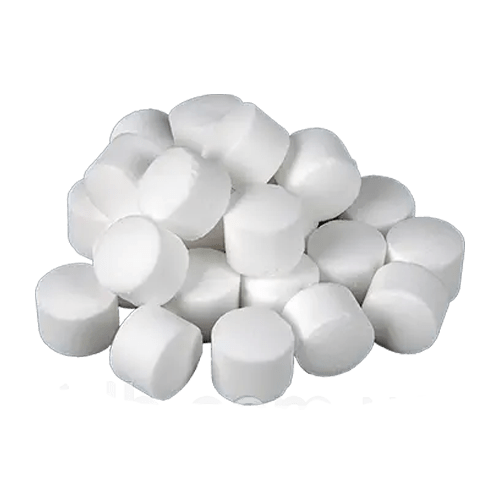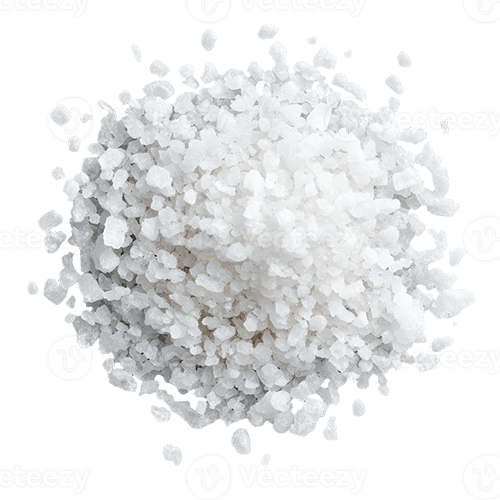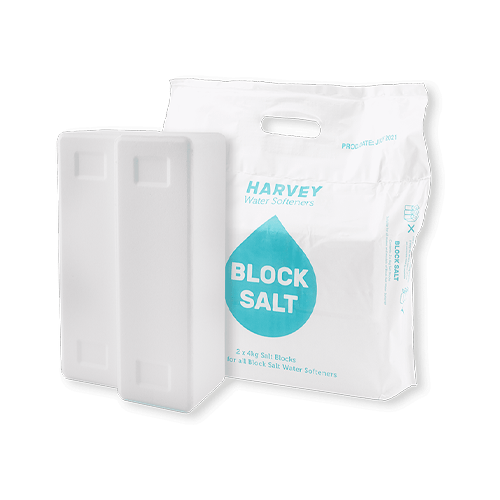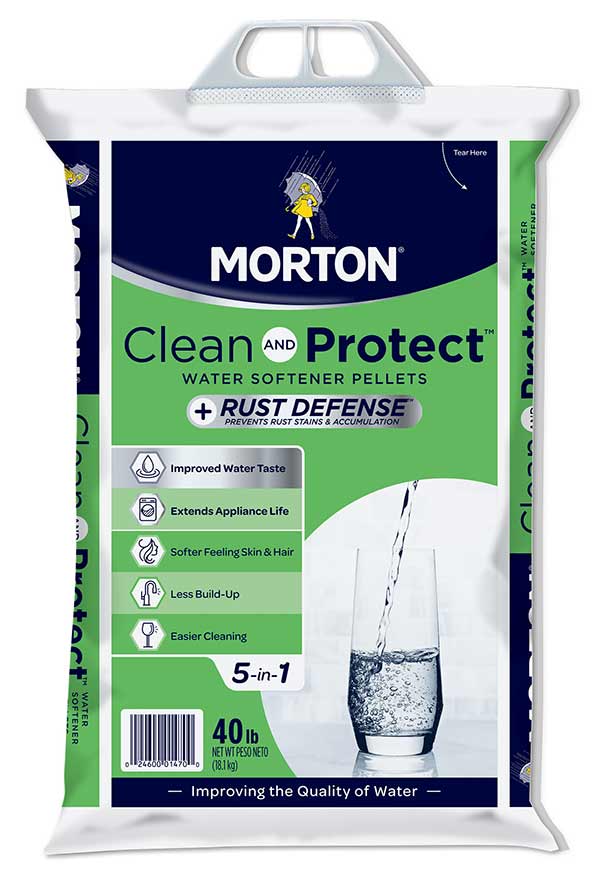Water Softener Salt: The Ultimate Guide to Pellets, Crystals, and Blocks
As a water treatment professional, I can tell you that the single biggest factor in your water softener’s long-term health—besides the quality of the valve itself—is the salt you put into it. It’s not just “salt.” Using the wrong type can lead to frustrating maintenance issues, reduced efficiency, and even damage to your system. This guide will demystify the world of water softener salt and help you make the perfect choice.
First, Why Does Salt Purity Matter So Much?
Before we compare the different types of salt, you need to understand the two dreaded enemies of every water softener owner: “bridging” and “mushing.” Both problems are almost always caused by using low-purity salt, and they will stop your softener dead in its tracks.
What is Salt Bridging?
A salt bridge is a hard, hollow crust of salt that forms in the upper part of your brine tank. This crust “bridges” the gap and prevents the loose salt above it from falling down into the water to dissolve and create the brine needed for regeneration. Your tank looks full of salt, but your system is starving for brine, and hard water begins to flow into your home. You’re then left with the annoying task of breaking it up with a broom handle.
What is Salt Mushing?
Mushing is even worse. This is when salt with high levels of insoluble impurities dissolves and recrystallizes into a thick, gooey sludge at the bottom of your brine tank. This salt “mush” can clog the safety float and the brine well, preventing the softener from drawing in the salt solution. The only fix is to completely empty the tank and manually scoop out the heavy, messy sludge.
Expert Takeaway: Purity is everything. Choosing a higher-purity water softener salt is the number one way to prevent both bridging and mushing, saving you from frustrating and messy maintenance chores.
The 3 Types of Water Softener Salt: A Deep Dive
Now that you understand why purity is king, let’s look at the three types of water softener salt you’ll see at the store.
1. Salt Pellets (The Professional’s Choice)

Pellets are the most common and widely recommended type for modern residential softeners. They are made from evaporated salt, a process where an underground salt brine is heated and vacuum-dried to produce the purest possible sodium chloride (typically 99.9% pure). This pure salt is then compacted into uniform, pillow-shaped pellets.
- Pros: Highest purity prevents sludge. Uniform shape prevents bridging. Universally compatible.
- Cons: Slightly higher cost than crystals.
2. Salt Crystals (The Budget Option)

Crystals are made from solar salt, where seawater is evaporated by the sun and wind in large ponds. The resulting crystals are harvested and washed. While still very pure (typically 99.6% – 99.8%), that small extra percentage of insoluble matter can make a difference over time.
- Pros: Lower cost. Still very effective at softening.
- Cons: Higher risk of bridging due to irregular shapes. Can lead to more sediment buildup over time, requiring more frequent tank cleaning.
3. Salt Blocks (The Specialty Case)

Block salt is essentially a giant, 40-50 lb brick of highly compressed evaporated salt. It’s clean and lasts a long time. However, it is NOT a universal option. DO NOT use block salt in a standard softener. It requires a specific type of brine tank designed to spray water on the block to dissolve it correctly.
- Pros: Convenient and long-lasting.
- Cons: Only compatible with specific block salt systems. Can lead to poor performance if used incorrectly.
Quick Comparison Chart: Salt Types at a Glance
| Feature | Pellets (Гранулы) | Crystals (Кристаллы) | Blocks (Блоки) |
|---|---|---|---|
| Purity Level | 99.9% (Highest) | 99.6%+ (High) | 99.9% (Highest) |
| How It’s Made | Evaporated | Solar | Evaporated |
| Bridging Risk | Lowest | Moderate | N/A |
| Maintenance Needs | Lowest | Moderate | N/A (system specific) |
| Cost | $$ | $ | $$ |
| Best For | Almost All Homeowners | Budget-conscious users | Specific block systems only |
What About “Specialty” Salts? (e.g., “Iron Fighter”)

At the store, you’ll see bags of salt pellets with labels like “Iron Fighter,” “Rust Buster,” or “Clean and Protect.” What’s the difference?
These are typically high-purity evaporated salt pellets that contain a small amount of an FDA-approved cleaning agent, usually sodium bisulfate or citric acid. This additive is designed to help clean the iron and mineral buildup from the resin beads during the regeneration cycle, keeping your softener working more efficiently for longer.
Is It Worth the Extra Cost?
My professional answer is: **Yes, if your water test shows you have iron.** If you have 1-2 PPM of iron or more, using an “Iron Fighter” salt is a smart, proactive way to protect your resin bed from fouling. For water without significant iron, standard high-purity pellets are perfectly fine and more economical.
Frequently Asked Questions
-
Which type of water softener salt is best: pellets, crystals, or blocks?
For the vast majority of residential softeners, salt pellets are the best choice. They are made from the purest (99.9%) evaporated salt, which minimizes the risk of salt bridging and sludge buildup (mushing). Crystals are a budget option but may require more frequent tank cleaning. Blocks should only be used in specific systems designed for them.
-
Why is salt purity so important for my water softener?
Purity is the most critical factor for preventing the two biggest maintenance headaches: bridging and mushing. High-purity salt dissolves cleanly, leaving almost no insoluble residue. This ensures your softener regenerates efficiently and saves you from the frustrating and messy task of breaking up salt bridges or scooping out sludge from the bottom of your tank.
-
What is a “salt bridge” and why is it a problem?
A salt bridge is a hard, hollow crust of salt that forms inside your brine tank. This crust physically blocks the loose salt above it from dropping into the water to dissolve. As a result, your softener can’t create the brine it needs for regeneration, and hard water will begin flowing through your home, even if the tank appears to be full of salt.
-
Is special “Iron Fighter” salt worth the extra cost?
Yes, “Iron Fighter” salt is worth the cost if your water test shows you have iron (1-2 PPM or more). These salt pellets contain an FDA-approved cleaning agent that helps remove iron buildup from the softener’s resin bed during regeneration, protecting your investment. If your water is iron-free, standard high-purity pellets are sufficient and more economical.
-
What’s the difference between salt “bridging” and “mushing”?
Bridging is a hard crust of salt near the top of the tank that stops salt from reaching the water. Mushing is worse; it’s a thick, gooey sludge of recrystallized salt and impurities at the bottom of the tank that can clog the entire system’s intake. Both problems are almost always caused by using low-purity salt.
My Final Recommendation: The Only Water Softener Salt I Use
While all three forms of salt will technically soften your water, they are not created equal when it comes to the long-term, trouble-free ownership of your system. I’ve seen firsthand how the wrong salt leads to frustrating service calls.
For over 95% of my clients and for my own home, I exclusively recommend high-purity evaporated salt pellets.
The few extra dollars per bag is a tiny price to pay for the peace of mind that comes from preventing messy salt mushing and frustrating salt bridges. They ensure the cleanest, most efficient, and most reliable operation for your water softener, protecting your investment for years to come. The right water softener salt is the foundation of a good maintenance routine.
